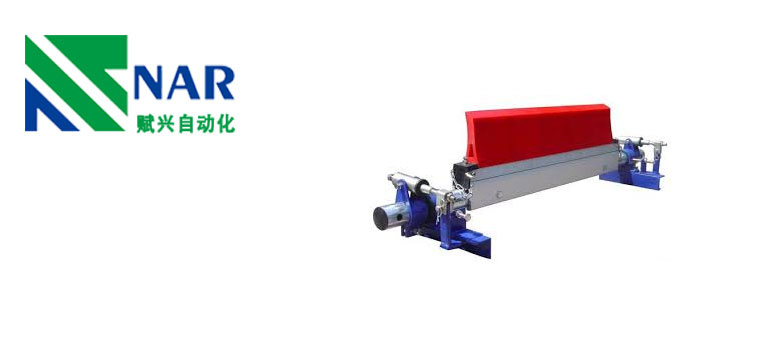When it comes to keeping a conveyor belt clean and operating efficiently, the best tool for the job is a conveyor scraper. These scrapers are designed to remove material from the conveyor belt, ensuring that your system works reliably and effectively. There are many different types of conveyor belt scrapers available, and each type has its own advantages and disadvantages. In this blog post, we’ll take a look at five of the most popular conveyor scraper types to help you make the best choice for your conveyor system.
What is a conveyor scraper?
A conveyor scraper is a device that is used to clean the surface of a conveyor belt. It consists of a blade or multiple blades mounted on a shaft or frame. The blades scrape off materials that have been stuck to the belt’s surface, such as dirt, debris, and other contaminants. Conveyor scrapers help keep conveyors running safely and efficiently, ensuring optimal performance and reliability.
1) Steel Blade Scrapers
These are the most common type of conveyor scrapers and are typically made of hardened steel. They provide a durable and economical solution for most conveying applications and require minimal maintenance. Steel blade scrapers are suited to materials with low-friction characteristics, such as sand, soil, and small stones, as they provide superior performance compared to other types of conveyor scrapers. This makes them ideal for use in mining operations where large quantities of material need to be moved quickly and efficiently. Additionally, they can also be used in industrial settings where high temperatures may cause other scraper types to malfunction or wear out quickly. Steel blade scrapers are also known to be relatively resistant to abrasion, making them a cost-effective option when dealing with heavy loads over long distances.
2) Carbide Blade Scrapers
Carbide blade scrapers are one of the most popular conveyor belt scrapers due to their durability and longevity. These scrapers are made of high-quality materials and feature tungsten carbide blades that are designed to effectively scrape away debris, dust, and another residue from the conveyor belt. They are easy to install and require minimal maintenance. Carbide blade scrapers are an excellent choice for heavy-duty industrial applications. This type of scraper is designed to last for years, even in the toughest conditions. The blades won’t wear down like other materials, making them a cost-effective solution for operations that need to run for extended periods. They are also well-suited for belts with small particles, as the tungsten blades can quickly and efficiently remove any debris from the surface.
3) Polyurethane Blade Scrapers
Polyurethane blade scrapers offer a great balance between durability and affordability. These scrapers are available in a variety of shapes and sizes, making them versatile and suitable for many different types of conveyor systems. They have excellent wear resistance, providing longevity to your system. Additionally, they are relatively lightweight, which makes them easy to install and maintain. Polyurethane blade scrapers are a great solution for removing dirt, debris, and other contaminants from belts. They can also be customized for specific applications and come in a variety of materials such as nylon or rubber. They are an excellent option for environments that require a low-cost, high-performance scraper to maintain efficient operations. Polyurethane blade scrapers offer the perfect balance between durability and affordability, making them a great choice for any conveyor system.
4) Rubber Blade Scrapers
Rubber blade scrapers are a great choice for conveyor systems where product sensitivity is a concern. They are designed to scrape debris without damaging the product and feature a flexible rubber blade with an adjustable angle and tension. They can be used on wet and dry applications, are long-lasting and require minimal maintenance. Rubber scrapers are ideal for conveying fragile items, food products and powdered substances. They also provide superior dust control compared to metal blades, allowing them to effectively remove dust and other particles from air or surface areas. Furthermore, they create less noise than metal scrapers while providing better scraping efficiency and less vibration damage on machinery parts. While they tend to be more expensive than metal or plastic blades, they typically have lower replacement costs over time due to their longevity and low maintenance requirements.
5) Combination Scrapers
Combination Scrapers are a hybrid of the other four types of conveyor scrapers. These scrapers are designed with a steel blade for heavy-duty materials and a polyurethane blade for lighter, fragile materials. This allows for maximum flexibility in material handling and makes them ideal for conveyor systems with multiple applications. Additionally, they feature minimal wear and tear due to the two different types of blades and are easy to install and maintain. Combination scrapers are an excellent choice if you’re looking for a reliable, cost-effective solution for your conveyor system. They can be used for both wet and dry materials, making them a great option for many industrial operations. Furthermore, their self-cleaning design helps keep your conveyor system running smoothly and efficiently. The main advantage of combination scrapers is their durability; they’re built to last and can withstand even the harshest industrial environments. As such, they’re ideal for long-term use and require very little maintenance over time. Finally, combination scrapers come in a variety of sizes and shapes so you can find one that perfectly fits your needs. So if you’re looking for a versatile scraper that can handle all types of materials, look no further than combination scrapers.
When deciding which type of conveyor scraper to use in your system, it is important to consider the material you will be conveying and the environment in which you are using the scraper. Steel blade scrapers are generally the most cost-effective option, while carbide and polyurethane blade scrapers offer greater wear resistance and durability. Rubber blade scrapers can provide good abrasion resistance, while combination scrapers can provide a combination of wear resistance and cost savings. Ultimately, the right scraper for your application depends on your individual needs and the environment.

